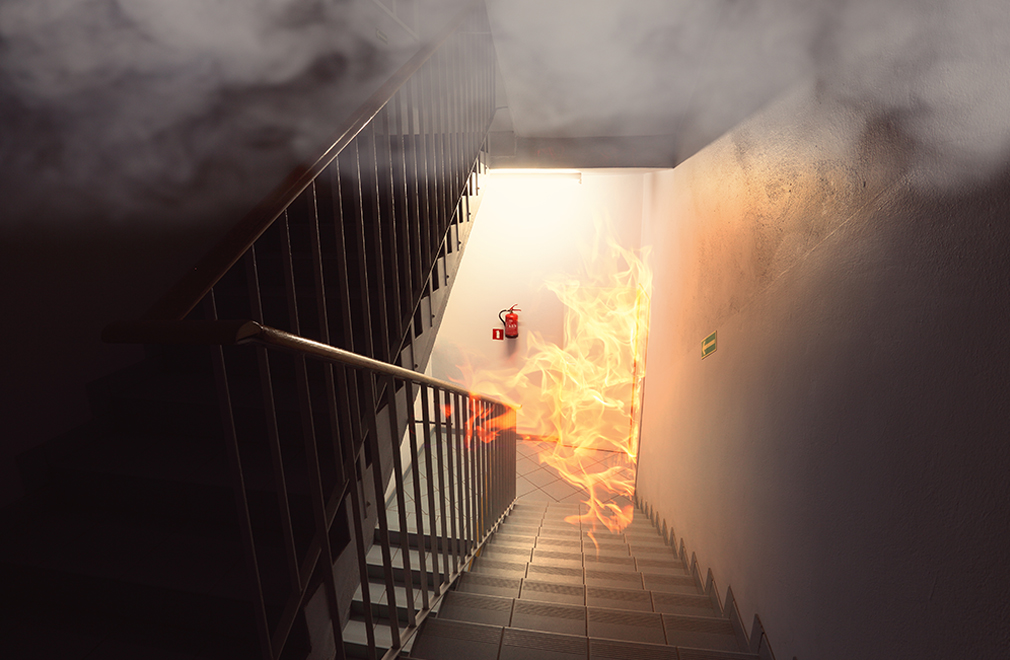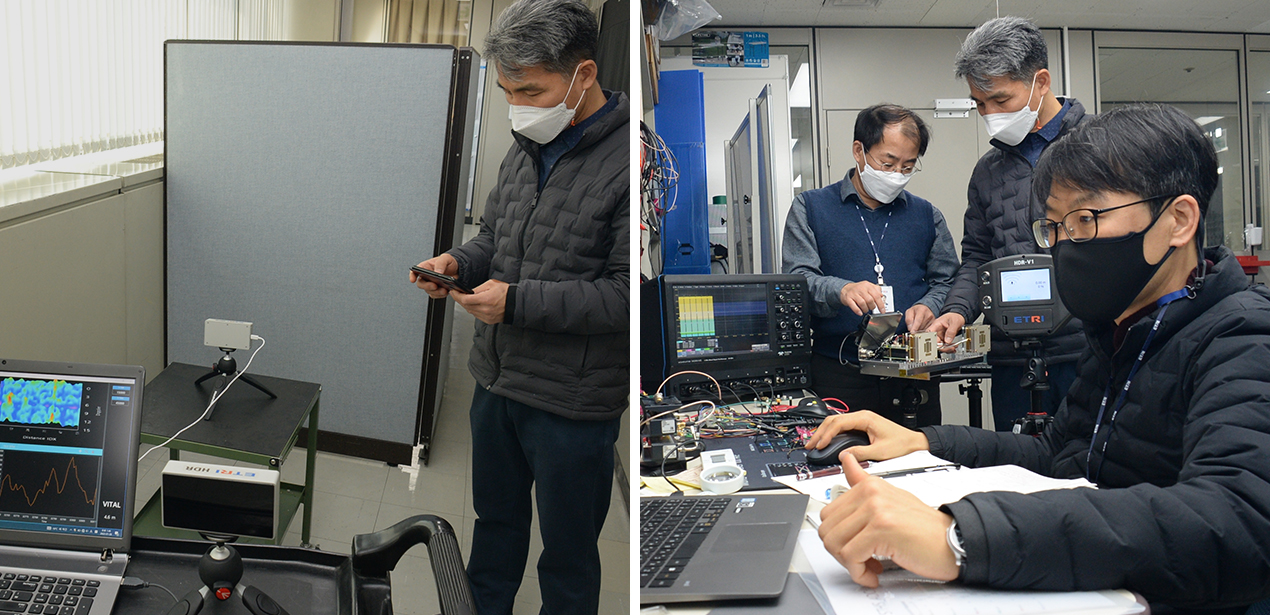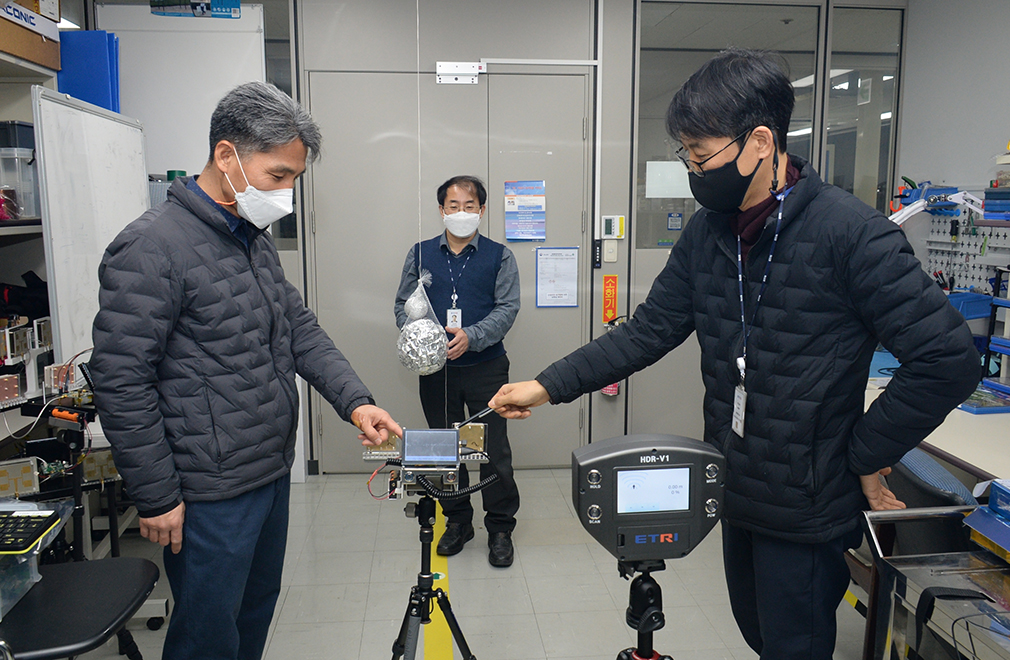
FOCUS ON ICT
ETRI Developed a radar sensor for seeking victims at disaster sites
- It overcomes firefighters’ visibility restrictions, such as darkness and smoke,
while supporting human detection
- It detects victim’s bio-signals beyond walls with a high-precision radar sensor
A domestic research team has developed the technology of saving human lives effectively by helping firefighters at indoor disaster sites due to fire, explosion, and collapse. It is expected that effective disaster response will be possible by supporting rapid and safe lifesaving.
The electronics and telecommunications research institute (ETRI) announced that it would develop a radar sensor-based life detection system, produce a prototype for field adaptation, and conduct a living lab demonstration test.
Effectively rescuing victims is difficult in disaster sites caused by fire, etc., because many factors, such as darkness, smoke, and dust, limit firefighters’ visibility and it is difficult to know the structure of the fire site.
The research team has developed the technology of overcoming the visual limit and detecting vital signs such as the victim’s breathing and heartbeat by implementing the technology in a firefighter's helmet or a portable device at a disaster site, using sensor semiconductor technology.
The research team predicted that it would help save lives promptly and accurately while securing the safety of firefighters significantly as the situation behind obstacles and the presence of victims at the disaster site could be identified using the penetrability of radio waves.

The research team has developed two types of radar sensor semiconductors to establish a life-detection system.
First, the Impulse Radio Ultra-Wideband (IR-UWB1)) radar sensor developed by ETRI for the first time can detect even centimeter (cm)-level movements using reflected electromagnetic waves. Therefore, it can detect vital signs such as movement, breathing, and heartbeat of the victim, which are difficult to check with the naked eyes.
The second is high-precision frequency modulation continuous wave (FMCW2)) radar sensor technology.
1) IR-UWB(Impulse Radio Ultra Wideband)a method of measuring the distance, speed, and position of a target by calculating the reflected time after the signal hits the target by emitting a very short electromagnetic wave signal. Precise position recognition is possible with low cost and low power.
2) FMCW(Frequency Modulated Continuous Wave)A method of measuring the relative distance and phase change using the reflected signals after continuously emitting signals of different frequencies as time goes by. It provides excellent measurement accuracy and reliability based on various signals.

It can detect a person who is lying behind a wall or someone breathing without movement after being buried in collapsed debris. Therefore, it further improved the accuracy of detecting alive humans.
The current size of the system is approximately 15cm x 20cm, while its size is planned to be miniaturized for firefighters to carry it conveniently in the future.
In the future, the research team is planning to continue their efforts to apply the sensor semiconductor-based lifesaving system to the disaster site, such as promoting a simulation demonstration through collaborating with firefighting-related organizations.
Bon-tae Koo, a senior researcher at ETRI, who is in charge of this project, mentioned, “The goal is to save lives within the golden hour and to secure safe rescue mission of firefighters in a disaster environment. We will do our best to quickly apply this technology to disaster sites so that it can contribute to the national disaster and safety management system.”
This research will be carried out until the end of this year as part of the ‘Lightweight RISC-V-based Ultra-Low Power Intelligent Edge Intelligent Semiconductor Technology Development’ project supported by the Ministry of Science and ICT.

Bontae Koo, Principal Researcher,
AI Compact SoC Research Section
(+82-42-860-1329, koobt@etri.re.kr)
